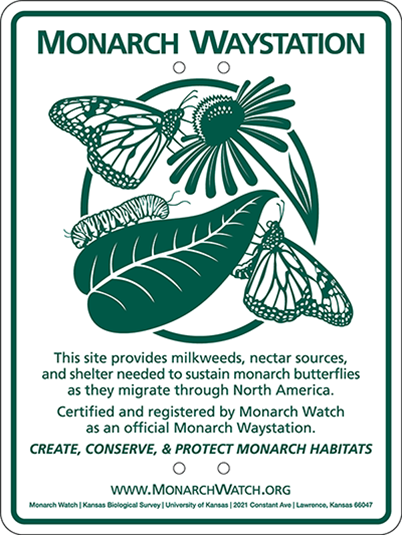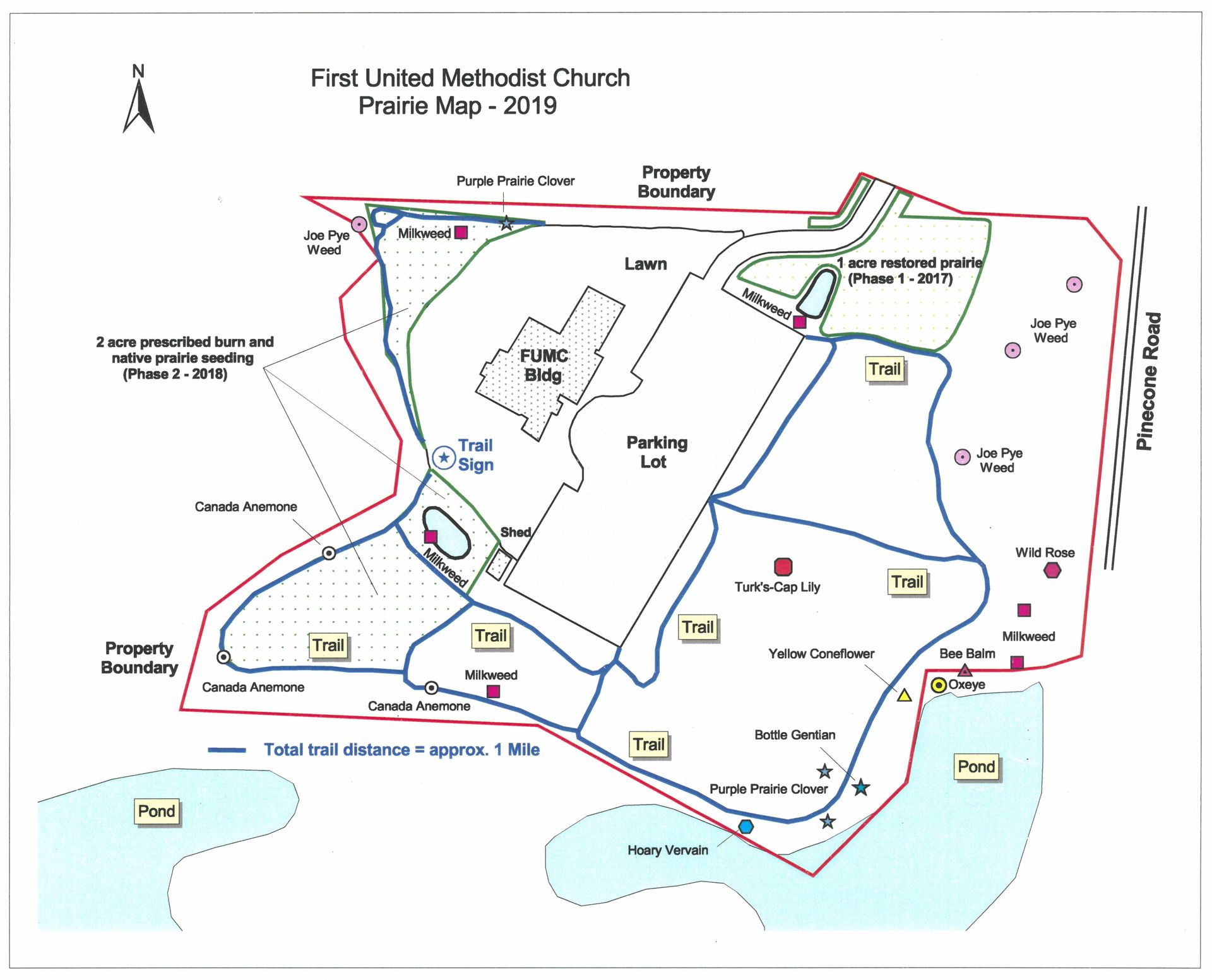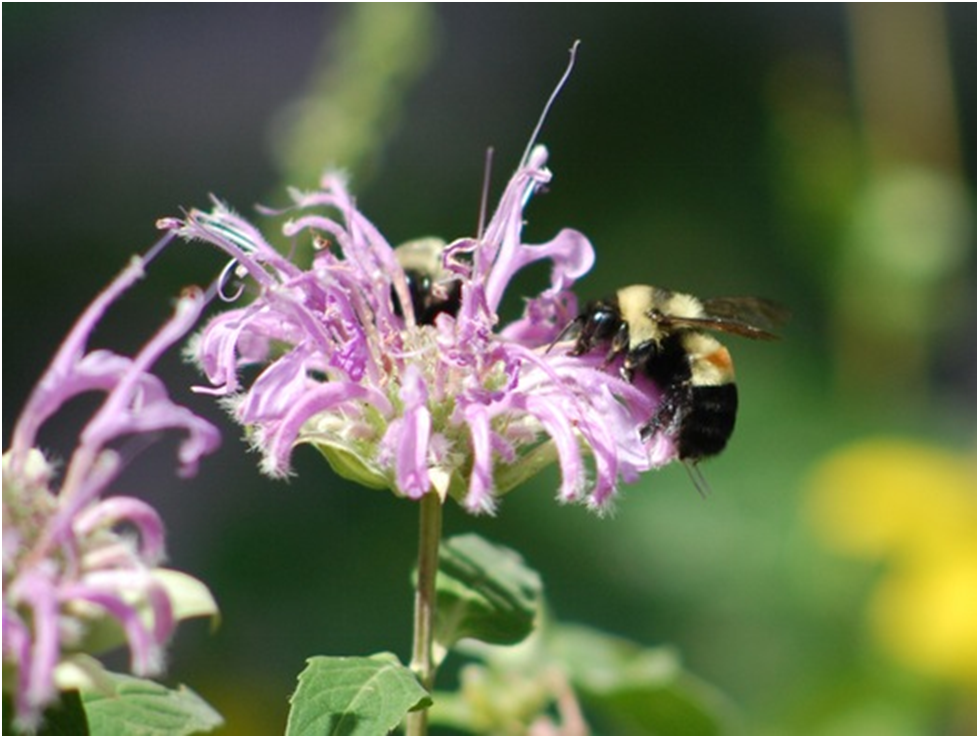OUR COMMITMENT TO CREATION
Butterflies, Bees, and Prairies: Pollinators at Risk
Paula Tompkins, Land Stewardship member
Chasing after butterflies is a fond childhood memory for many of us. Experience taught us to leave bees alone when they visited flowers in our yard. What butterflies and bees and even flies, wasps, beetles, birds and bats have in common is that all of them pollinate plants. Insects and animals help pollinate over 75% of our flowering plants and nearly 75% of our crops. Pollination occurs when pollen from the male part of a flower (stamen) is moved to the female part of the same or another flower (stamen), fertilizing the flower. Successful pollination produces fruits and seeds. The primary methods of pollination in nature are wind, insects, and birds, with wind being the least reliable.
Our lives depend on pollinators. Home gardeners and farms who grow vegetables or fruit, depend on pollinators for successful harvests that provide food for our tables, including food we purchase from grocery stores, farmers markets, or CSAs. Farmers depend on pollinators to grow grain. Many decorative plants in our yards and homes depend upon pollinators to create seeds for next year’s bloom.
Pollinators, particularly bees and monarch butterflies, have been in the news because their populations are declining, to the point that some question whether they will survive. Loss, fragmentation and degradation of habitats are among the major threats to the survival of all pollinators.
Another threat to pollinators is improper use of pesticides by homeowners and farmers. Some pesticides, such as the systemic pesticide neonicotinoid is toxic to bees and other pollinators.
Prairies provide important habitat for pollinators, including bees and Monarch butterflies, making prairie restoration important in protecting and supporting declining populations of pollinators. Our FUMC prairie is a designated monarch waystation, part of the monarch butterfly highway that stretches from Texas to Minnesota. Prairie grasses and flowers offer pollinators nesting sites, as well as pollen and nectar for food. The variety of grasses, flowers, and shrubs growing in our prairie and along the county ditch on the north side of our property offer pollen and nectar at different times of the year. Providing food throughout the growing season is important for pollinator survival.
Many of the native flowers and shrubs grown in our prairie can be planted in our home gardens, expanding support of pollinators throughout our community. The University of Minnesota Extension has information about native plants and how to plant and care for a bee friendly lawn. Our efforts to stem and even reverse the decline in pollinator populations make it more likely that children will still chase butterflies.




